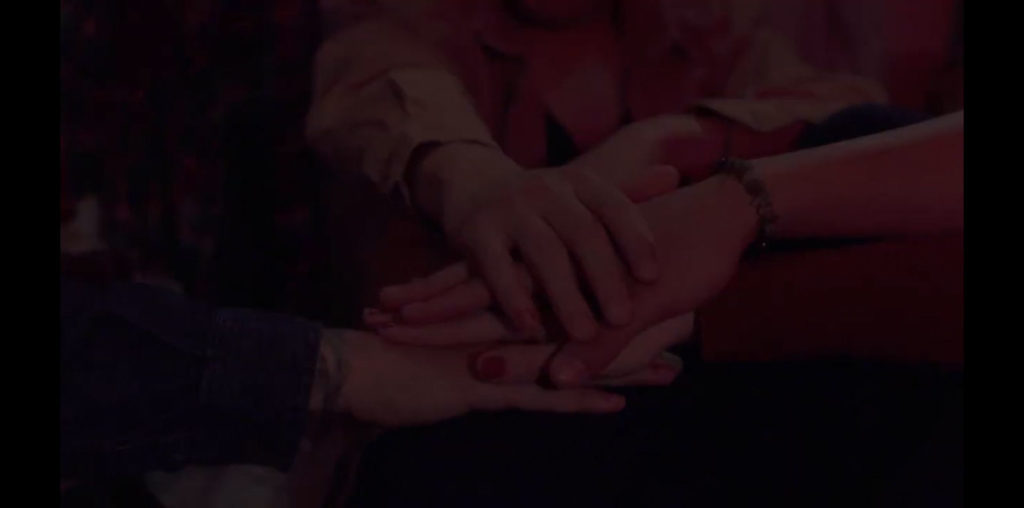
Alright, calm yourselves, you pervs – and head over to your favorite tubeporn site if that’s what you’re thinking. What we have here is a solid piece of film text as film criticism. Hardly the kind of casually informative viewing found in a TCM documentary, “The Pervert’s Guide to Cinema” is dense and academic – with tons more info than even its sizable running time would suggest. Warning: it’ll definitely require more than one viewing. But when finally inhaled in full, this work of docu-criticism keeps us mulling over its profound insights. After all, it is out to have film lovers rethink our most beloved art form.
“Presented” by Slovenian psychoanalyst/film theorist Slavoj Zizek and essentially his creation (though directed by Sophie Fiennes – yes, she’s related), “Pervert’s Guide” presents the scholar’s thesis straight away: “Cinema is the ultimate pervert art. It doesn’t give you what you desire; it tells you how to desire.” True enough, Zizek – the subject of two other recent documentaries – veers film criticism toward the clouds of the theoretical; blink and fall behind, and you’ll feel like he’s entered them. But there’s much intellectual delight in Zizek’s thickly accented explanations. (Though I must confess: I needed the subtitles on to take it all in.) He explicates trademark scenes (many classic, some contemporary) to outline his theories and, as expected, his readings at times seem selective and not as universal as this passionate intellect would want us to believe. “Psycho’s” shower drain and “The Conversation’s” toilet serve as Freudian symbols because both films like to chew on pop-psychology. Meanwhile, Zizek wouldn’t likely acknowledge that in cinema in general, they aren’t ideas, but just things. Yet his essential motives are more concerned with the nature of the human mind and how it views – and how, in turn, viewing reflects our psychological processes. Thus, his examples of choice (filmed on set recreations) serve his goals well – this film should be titled “The Cinema Lover’s Guide to Perversion” (the last term refers to the practice of viewing, let’s not forget).
Not that Zizek’s breakdowns aren’t flat-out brilliant. He explicates “Blue Velvet’s” trademark voyeurism scene – in which, from a closet, Kyle MacLachlan’s character Jeffrey watches a ritualistic rape/performance by Dennis Hopper’s Frank Booth upon Isabella Rossellini’s Dorothy – by describing the three characters’ perspectives as representative of three human sex fantasies. Jeffrey’s point of view represents the Freudian “primal scene,” in which a youth would view his parents’ lovemaking as a distorted, horrifying act; Booth’s, the masculine instinct to shield impotency with violence and “spectacle”; and Rossellini’s as a passive party’s wish for violation to awaken herself out of torpor (the final reading being the most provocative, if misogynistic). Yes, it’s Freudianism by way of Lacan, and scooping up all the ideological baggage along the way. Though I doubt any reading of Lynch’s trademark scene is more powerful – I bet the Zen filmmaker would be freaked by this unmasking. As you’d guess, Zizek visits other works by the director.
Zizek also returns to Hitchcock throughout the film. After a brief insight about “The Birds” the critic pulls miles out of “Psycho’s” maternal theme and reads “Vertigo” as the cinema’s purest theoretical statement on how we view and redefine images and symbols by doing so. To fully account for Zizek’s treatise on cinema, I’d need to undertake a third viewing, which I know isn’t too far off. I’d guess that David Sterrit, who has already written the be-all, end-all review essay of the film in Cineaste’s Summer 2009 issue, has absorbed as much already. I admire and pity the man: I’d guess by now he’s regularly haunted by what he sees on the screen. But please take his (and my) word for it – if psychobabble scares or bores you, give this one a shot anyway. Cinematically speaking, you my find your meeting with Zizek to be a near-religious experience.
